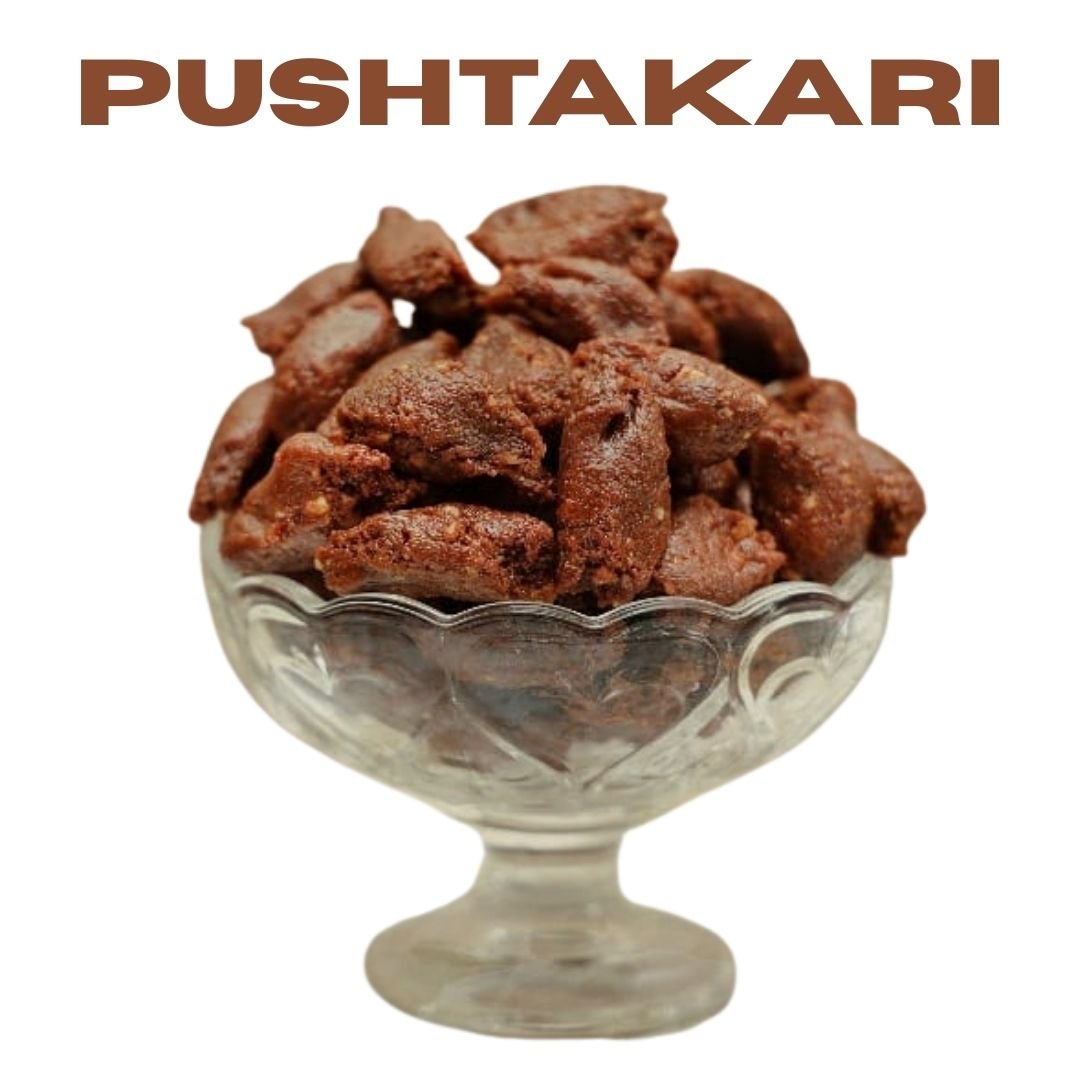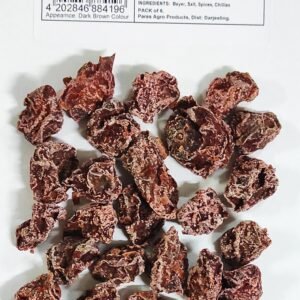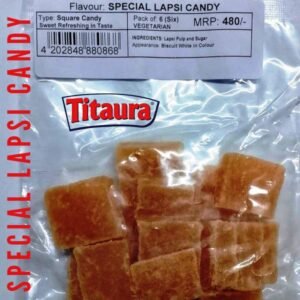Description
Pushtakari: A Sweet Delicacy from the Himalayas Loved by the Nepali Community
When it comes to sweets that carry both flavor and heritage, few match the charm of Pushtakari. Known as a traditional sweet delicacy from the Himalayan regions, Pushtakari has long been a favorite among the Nepali population of Darjeeling, Sikkim, and Nepal.
Prepared using khoa (reduced milk), sugar, almonds, and coconut, it is a sweet that blends nutrition with nostalgia. Pushtakari is not just food—it is a part of cultural rituals, family celebrations, and daily indulgence in the hills. Today, as more people seek authentic regional sweets, Pushtakari is gaining recognition outside its native regions.
In this blog, we’ll explore what Pushtakari is, its cultural importance, how it is made, health aspects, and why it’s becoming a favorite among food enthusiasts across India and beyond.
What is Pushtakari?
At its core, Pushtakari is a milk-based sweet made by reducing milk into khoa (mawa) and combining it with caramelized sugar, coconut, and almonds. It is then shaped into bars, squares, or diamonds, depending on local preferences.
The name itself carries meaning:
-
“Pusht” in Nepali/Hindi implies strength, nourishment, or sustenance.
-
“Kari” refers to something that is made or prepared.
Thus, Pushtakari = a preparation that provides nourishment and delight.
Unlike mass-produced sweets, Pushtakari is largely artisanal, often made in local sweet shops or households. Its taste is distinctly milky, nutty, and aromatic, with just the right balance of sweetness.
Historical and Cultural Roots of Pushtakari
A Sweet with Generations of Legacy
The history of Pushtakari is deeply tied to Himalayan culinary traditions. For centuries, families in the hilly regions of Darjeeling and Sikkim prepared this delicacy during festivals, weddings, and special occasions.
The Nepali diaspora, who form a large part of the population in these regions, brought with them culinary traditions that emphasized milk-based sweets, dry fruits, and coconut—all symbols of prosperity and celebration.
Role in Festivals and Celebrations
Pushtakari is especially popular during:
-
Tihar (Deepawali in Nepal) – Prepared as an offering to gods and shared with family and neighbors.
-
Maghe Sankranti – A winter harvest festival where sweets made of milk and sesame are central.
-
Weddings & Social Gatherings – Served as part of the traditional sweet platter.
For many Nepali families, no festive celebration is complete without Pushtakari. It is both a treat and a tradition.
The Ingredients that Define Pushtakari
The beauty of Pushtakari lies in its simplicity—it requires just a few ingredients but delivers extraordinary flavor.
-
Khoa (Mawa) – The base of the sweet, created by slow-cooking milk until it reduces into thick solids.
-
Sugar – Caramelized to perfection, lending both sweetness and a binding texture.
-
Coconut – Fresh or dried, it balances the richness of milk with tropical freshness.
-
Almonds – Slivered or chopped, they add crunch, nutrition, and a premium touch.
Optional variations sometimes include cardamom powder for aroma or other nuts like cashews, but the classic Pushtakari remains minimalistic and pure.
How Pushtakari is Made: The Traditional Method
The making of Pushtakari is an art passed down through generations. Unlike factory sweets, it is crafted with patience and care.
Step-by-Step Process:
-
Milk Reduction – Full-cream milk is simmered for hours until thick khoa (mawa) forms.
-
Caramelization – Sugar is heated until golden and gently combined with khoa.
-
Mixing – Roasted coconut shreds and almond pieces are folded into the mixture.
-
Setting – The hot mixture is spread onto greased plates or trays.
-
Cutting – Once slightly cooled, it is cut into neat bars, diamonds, or squares.
The result is a dense, chewy, and flavorful sweet that melts in your mouth while offering a nutty crunch.
Why Pushtakari Holds a Special Place in Nepali Culture
For the Nepali community in Darjeeling, Sikkim, and Nepal, Pushtakari is more than a delicacy—it is an emotional connection to home and heritage.
-
It is given as prasad (sacred offering) during religious rituals.
-
Families gift it during festivals to symbolize goodwill and prosperity.
-
It is often the first sweet offered to guests, reflecting Himalayan hospitality.
Many people who grew up in Darjeeling recall buying freshly made Pushtakari wrapped in small paper packets from local bazaar shops. For them, the taste is synonymous with childhood memories.
Pushtakari vs. Other Indian Sweets
India is known for its vast variety of sweets, but Pushtakari stands apart:
-
Regional Identity – While sweets like rasgulla or gulab jamun are widely known, Pushtakari remains a specialty of the Himalayan belt.
-
Balanced Sweetness – Unlike overly sugary sweets, Pushtakari has a subtle sweetness that enhances its flavor.
-
Nutritional Value – The inclusion of khoa, almonds, and coconut makes it relatively more nutritious than many fried sweets.
-
Handmade Tradition – Its artisanal preparation ensures authenticity.
Health Benefits of Pushtakari
While sweets should always be enjoyed in moderation, Pushtakari offers certain nutritional benefits:
-
Khoa (milk solids) – Rich in calcium, protein, and healthy fats.
-
Almonds – Packed with vitamin E, magnesium, and antioxidants.
-
Coconut – Boosts energy, aids digestion, and provides dietary fiber.
-
Natural preparation – Unlike heavily processed sweets, Pushtakari often uses fresh, local ingredients.
This makes it a healthier alternative to many store-bought, preservative-heavy sweets.
Pushtakari in Modern Times
Today, as regional delicacies gain popularity, Pushtakari is moving beyond its traditional boundaries.
-
Darjeeling sweet shops still prepare it fresh for locals and tourists.
-
Online stores are beginning to list it, allowing people to buy Pushtakari online across India.
-
The Nepali diaspora abroad often carries it as a token of home.
Its authenticity, nostalgic value, and artisanal charm make it appealing to a global audience looking for unique sweets.
Where to Buy Pushtakari
If you’re visiting Darjeeling or Sikkim, you can find Pushtakari in local markets and sweet shops. In recent years, some online sellers specializing in Himalayan products have started delivering it to cities across India.
When buying online, ensure you choose a seller who:
-
Uses authentic ingredients.
-
Follows traditional recipes.
-
Delivers freshly made batches.
Conclusion: Pushtakari as a Symbol of Heritage and Flavor
Pushtakari is not just a sweet—it is a culinary symbol of the Nepali community in Darjeeling and the Himalayas. Made with khoa, sugar, almonds, and coconut, it reflects the region’s tradition of combining simplicity with richness.
For those who grew up in the Himalayan hills, Pushtakari is a taste of nostalgia. For others, it is an exquisite introduction to Nepali culture through food. As awareness grows, Pushtakari is set to become a celebrated delicacy across India and beyond.
So, the next time you want to experience an authentic sweet with cultural depth, treat yourself to Pushtakari—a bite of Himalayan tradition.
🌿 Keywords to Rank
-
Pushtakari
-
Buy Pushtakari Online
-
Darjeeling Sweets
-
Nepali Sweet Delicacies
-
Himalayan Traditional Sweets
-
Khoa Sweets India
-
Authentic Nepali Desserts
📌 Hashtags
#Pushtakari #DarjeelingSweets #NepaliDelicacy #HimalayanFlavors #TraditionalSweets #KhoaDelight #NepaliCulture #DarjeelingFood #HillStationTreats #BuyPushtakariOnline








Reviews
There are no reviews yet.